The content of the article
Perhaps there is no family that does not eat garlic. And very many plant it in their personal plots, making the same mistakes from year to year. They confuse winter and spring, do not comply with deadlines. Sometimes they just stick the teeth into the ground with an effort and wait for a miraculous harvest.
There are many articles on this topic on the Internet. And it is clear that the advice is there from the bulldozer. Let's look at them, at the same time we will learn how to plant garlic in the fall.
Choosing a place to land
Some sources claim that it does not matter where the garlic is planted. This is fundamentally wrong. Autumn planting is a whole technology. And if you just poke the cloves somewhere, then something serious is unlikely to grow.
It is necessary to observe the correct agricultural technology, so that the result is pleased:
- Location must be prepared in advance. The soil should rest at least a month from previous plantings. During this time, you can prepare it slowly and without much effort.
- Choose a site on which root crops and other bulbs did not grow. An ideal place from under early greens or gourds.
- It is advisable to dig the earth or at least treat it with a plane cutter. At the same time, 3 kg of humus and 30 g of phosphorus-potassium fertilizers are applied per square meter.
- Naturally, weed away from weeds.
- And further. The site should not be flooded with water in autumn and spring.
- Good light at least two-thirds of the day is welcome.
These are the basic rules for choosing a landing place. There are recommendations to make fresh manure to increase productivity. Many do just that. Then they are surprised. Harvested, and there are rotten and diseased bulbs. Sin for weather or seed. And manure is to blame. It is strictly forbidden to make it with garlic! Only very rotten and a year before planting.
When to plant in the fall
In the fall, garlic should be planted so that it has time to take root before the frost, but does not have time to ascend. To do this, you will have to follow the weather forecast. Or focus on the climate of your area. After all, if you live there constantly, then you already roughly know the time when frosts come.
Old people advise not to trust the dubious words of modern weather forecasters. They have their own methods for determining that the time has come for the autumn planting of garlic:
- ordinary frogs disappeared from sight, they can no longer be heard in the evenings
- in the afternoon, if you step barefoot on bare ground, she is uncomfortable with the coolness
- half of the crown spread from birches
- hands without gloves on the street chilly
- Indian summer is over
Of course, all these are folk signs. They give only an approximate idea of the timing of landing. But why not use them in conjunction with an estimated forecast? The most error-free will be landing at night temperature from 7 to 10 ° C.
Proper fit
Online articles recommend making a different distance between the garlic prongs, depending on their size. Allegedly, the smaller the planting material, the less there should be a gap. This is fundamentally wrong.
Even from the smallest teeth you can get a good bulb of a decent size, if you leave enough room for growth and properly care for the plantings.
Therefore, it is necessary to plant according to the scheme 17 by 30. That is, between rows 30 cm, and between the teeth 17 cm. This distance allows you to freely loosen the soil with a chopper or treat it with a plane cutter, without fear of damaging the stems. In addition, the earth will not be compacted during the onion filling, and this directly affects the size of the crop.
The depth of autumn planting is also independent of the size of the planting material. It should be 12-14 cm. Plant deeper - in the spring, garlic will sprout long and hard. Plant smaller - the root system during germination can push the tooth closer to the surface, and the garlic simply freezes.
In this case, the teeth are never sprinkled on top and bottom with a layer of sand, as some advise. Because it freezes through much faster than ordinary earth. But we don’t need it. It is better to sprinkle with a thin layer of peat.
In order not to damage the bottom of the garlic, there are several options for autumn planting:
- Draw the beds with an improvised tool. Then they are deepened, the bottom is not rammed so that future roots sprout freely. Sprinkle a thin layer of peat with a small addition of wood ash. Then the teeth are gently laid down with the bottom down and sprinkled with a layer of loose soil, about 9-11 cm.
- Holes in the garden make a wide, long peg. They throw a pinch of ash and lower the cloves of garlic. Then it remains only to fill the soil with planting.
- If the earth is loose, well prepared, then you can simply draw rows. Then gently push the garlic into the ground and zaboronit rake.
The latter method assumes that you are confident in the quality of your soil. Otherwise, the bottom can be damaged by crushing it with excessive force.
By the way, they advise planting garlic in the autumn with an acute angle to the north, and a semicircular barrel to the south. Allegedly, this allows to increase productivity by 30%. Scientific research on this topic has not been conducted. But what prevents you from doing an experiment in your garden, planting one garden in this way? And in the summer, compare the harvest, and decide whether it is true or fiction. Moreover, there is absolutely no harm from this.
Preplant treatment
It’s not enough just to peel heads and poke them in the soil. So that garlic does not hurt or rot, it must be processed. First, the largest and healthiest teeth are chosen. They should have a dense skin characteristic of the color variety. Yellowing or a gray (greenish) hue indicates that the progression of the disease has already begun. Such teeth are not recommended.
Naturally, there should be no external mechanical damage. Cuts, dents, scratches - these are the first gates for pathogenic bacteria. No treatment will save infected garlic cloves.
After peeling and sampling, soak the garlic in a solution of table salt for 5 minutes. This is 5 tbsp. l on 5 l of pure water. Then, without drying, the planting material is immersed in a solution of copper sulfate or a pale pink solution of potassium permanganate. At least 2 hours.
At the end of processing, it is advisable not to dry the garlic, but to plant it immediately. Although, it happens that sometimes there is no such possibility. In this case, it is allowed to plant the teeth within 3 days. Otherwise, then you will have to process them again.
Mulch or not
Some sources claim that you must certainly mulch a thick layer of garlic immediately after planting. Allegedly, this will protect him from the cold. Rave. From frost, garlic protects the soil layer from above and a good root system.
Suddenly the fall will be lingering and the planting will begin to rise? Subsequent frosts will not bring harm to Zelenushka. But the mulching layer simply does not allow young garlic feathers to straighten. Or in the spring you will not have time to clean up after the snow has melted. The result will be the same.
The use of mulch will be correct only if severe frosts have already come, and there is no snow at all. But not before! You can use peat, leaf litter, sawdust, humus, spruce branches, moss. You can even take a thick covering material in several layers. But the main thing is that any of the shelters needs to be removed when the snow begins to fall.
And to delay it as much as possible, you can throw a shovel from neighboring beds. Too lazy to wave a shovel or not possible? Put branches or branches on top of the garlic planting.It is desirable that they be lush and hardened. So the snow will linger and lay a thick blanket.
How to water
There can be no exact and strict directions. It all depends on soil moisture before planting. Drawn a bed and look. Dry land? Water before laying out the tines, thoroughly soaking the soil to a depth of at least 4-6 cm. Wet? Then watering is unnecessary.
Rumor has it that if the autumn is warm and dry, then planting garlic should be thoroughly moistened several times. However, most reviews say that preplant watering is enough. And no more water is needed. We tend to consider the recommendation not to water more garlic the right one. Because this vegetable from excess moisture begins to rot, hurt and deteriorate.
Interesting and useful
- The following phrase was found on the open spaces of the network: “March garlic is much more useful than May garlic. Fresh heads are good in early spring. ” What kind of garlic is ready to be scooped up in March? We wish to know this wonderful variety! After all, the familiar winter is just beginning to emerge, and spring and generally begin to plant after the snow melts. It’s immediately obvious that the person who wrote this exceeded Michurin himself! Still, remove garlic, ready for use in March or May, and even with full heads, it is worth a lot.
- Many fear the early germination of garlic. They think that during the first frosts the green feathers will die, and with them the whole prong will order a long life. Nonsense. Garlic feathers up to 10 cm tall tolerate wintering. And in the spring calmly grow up. Cold, snowless winters can ruin the ascended aerial part. But the roots remain intact. Therefore, there may be a slight yield loss. But it is perfectly replenished with mineral and organic fertilizing during the entire vegetative period.
- By the way, garlic is very grateful for phosphorus-potash fertilizers. But with an excess of nitrogen in the soil, it forms a loose bulb, which is very susceptible to various diseases and rot.
- There are recommendations to soak the teeth before planting in a solution of em bacteria. We consider this inappropriate. When garlic is planted, the soil temperature is only + 5-7 ° C. And em preparations work only at temperatures above + 17 ° C. It is better to use them for their intended purpose. Prepare a green fertilizer with microorganisms in spring, then regrow the already grown garlic. This will be effective.
- Do not buy in-store garlic for later planting or brought from other regions. As a rule, he has cut the bottom, and with it the roots of the roots. Better look for suitable heads on the people in the market. Or, if possible, buy from neighbors, acquaintances, relatives. So you will know for sure that the planting material is zoned and will grow perfectly in your garden.
- Do not turn the prong upside down during autumn planting. As a last resort, you can put it on a barrel. Well, the head develops best when the garlic is planted vertically, with a thin tail up. The stem lying on its side will have a curved stem, which greatly complicates the flow of nutrients to the head. An inverted garlic may not rise at all. And certainly it will not give you a mighty crop of strong and large heads.
How to plant garlic in the fall? As you can see, this is a whole technology. But, following our recommendations, in July you can collect a generous harvest for your joy. After all, it is much more pleasant to taste your garlic - it is easy and economical.
Video: tricks of planting garlic in the winter

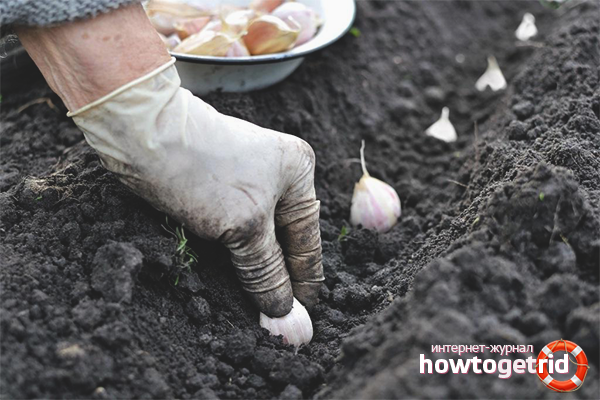
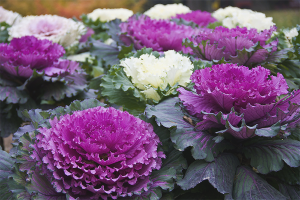
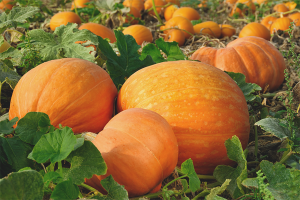
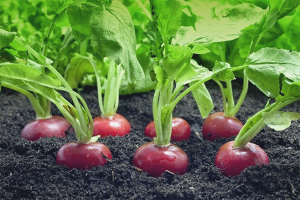

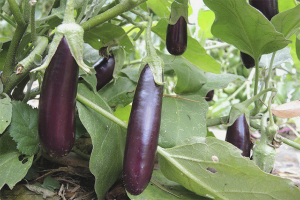
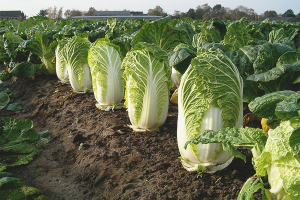
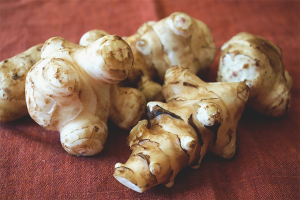
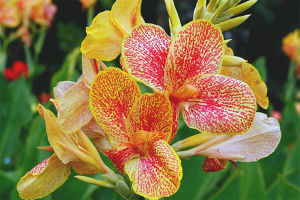
Submit